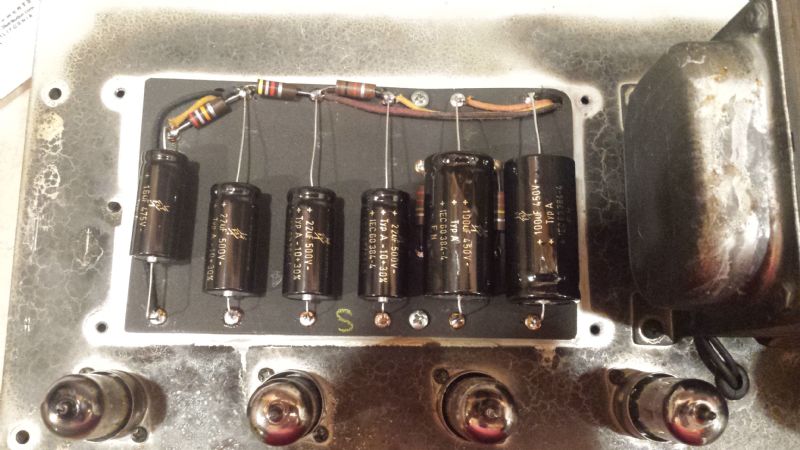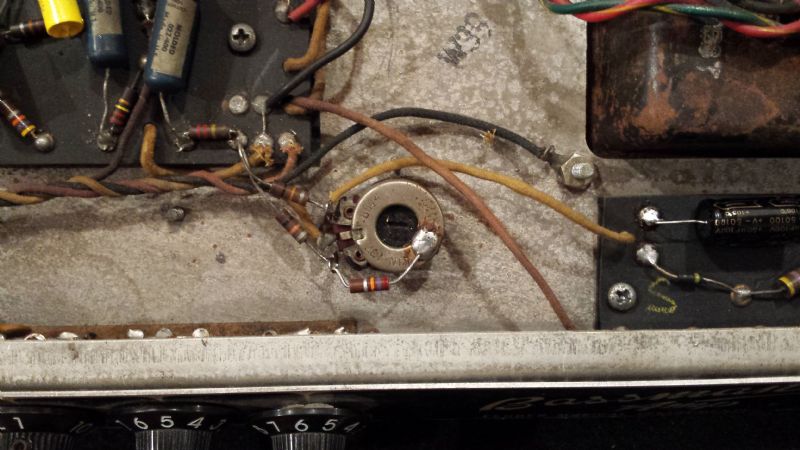Originally posted by g1
View Post
The attached gut shot of a 1961 Bandmaster shows that the transition from yellow Astrons to Blue molded caps happened that year. The blues were then used throughout the blackface years and the first brown drop caps showed up around 1965 when it was common to see one or two browns in an amp.
Cheers,
Tom
Edit: Fixed typo correcting 1691 to 1961. There are no existing 1691 Bandmasters. The last known unit was lost at sea when pirates attempted to smuggle it to England.



Comment